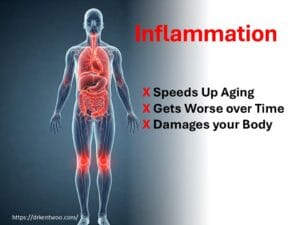Understanding Stinging Insect Allergy

Getting stung by a bee, wasp, hornet, or fire ant can be unpleasant for anyone. However, for those with a stinging insect allergy, it can lead to more than just a painful sting—it can trigger life-threatening reactions. Millions of people worldwide are affected by stinging insect allergies. Knowing how to recognize the symptoms and protect yourself is essential.
What Causes Stinging Insect Allergies?

When an insect stings, it injects venom into your skin. For most people, this results in mild pain, redness, and swelling. However, if you’re allergic, your immune system overreacts to the venom, causing severe and potentially dangerous symptoms.
Symptoms of Stinging Insect Allergies
For some, the reaction is mild, with symptoms like localized pain, itching, swelling, and redness. But for individuals with an allergy, the reaction can be far more severe, involving:
- Hives and widespread itching
- Swelling beyond the sting area (e.g., lips, eyes, or throat)
- Difficulty breathing or wheezing
- Dizziness, fainting, or even loss of consciousness
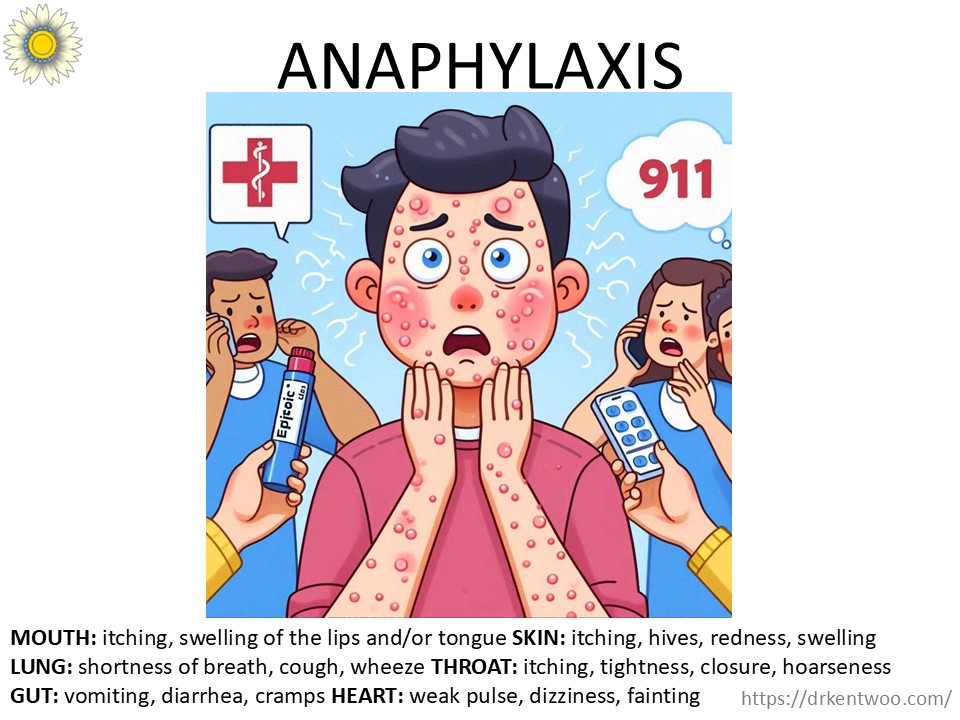
In extreme cases, an insect sting can trigger anaphylaxis—a life-threatening allergic reaction that requires immediate emergency care.
Testing and Venom Immunotherapy (VIT)
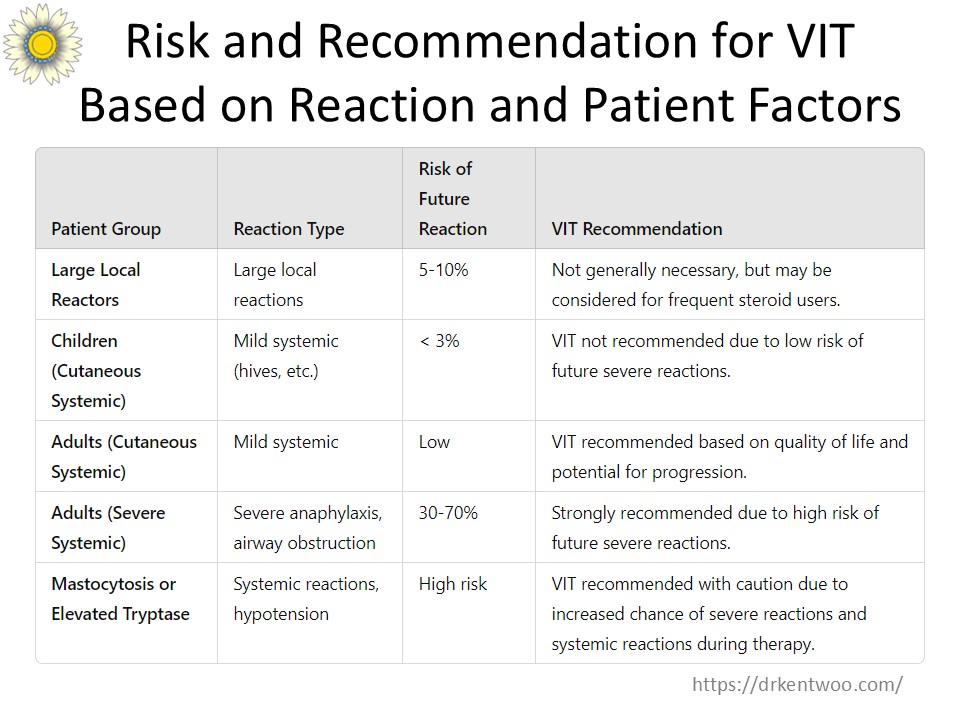
If you’ve had a systemic reaction to an insect sting, such as shortness of breath, swelling around the eyes, or dizziness, it’s highly recommended to get tested for venom allergy. Testing can confirm your allergy, and venom immunotherapy (VIT) may be prescribed to reduce the risk of future severe reactions.
Patients who experience symptoms beyond hives are at high risk of severe reactions with future stings, making VIT a highly effective preventive measure. Individuals with conditions like mastocytosis or elevated tryptase levels are also at increased risk of serious reactions from repeat stings.
Why Choose Venom Immunotherapy (VIT)?

Venom Immunotherapy (VIT) is a highly effective treatment for those who have experienced severe allergic reactions to insect stings. Over time, it desensitizes the immune system to the venom, significantly reducing the risk of life-threatening reactions in the future.
Benefits of Venom Immunotherapy:
- Long-term Protection: VIT provides long-lasting protection, with studies showing a 90-98% success rate in preventing severe allergic reactions to future stings.
- Improved Quality of Life: Individuals undergoing VIT can feel more confident engaging in outdoor activities without the constant fear of severe allergic reactions. Unlike an epinephrine auto-injector, which only treats symptoms after they occur, VIT modifies the body’s response to insect venom at its source.
- Reduced Severity: Even if a reaction occurs after immunotherapy, it is likely to be much less severe, potentially preventing a full-blown anaphylactic episode.
How Effective is VIT for Different Insects?
- Honeybee Stings: Honeybee venom tends to cause more severe allergic reactions, and the success rate of VIT is around 85%. Honeybee allergy sufferers may need longer therapy to achieve full protection.
- Wasp Stings: VIT for wasp venom has a higher success rate, with studies showing around 90-95% effectiveness.
- Fire Ant Stings: Immunotherapy for fire ant venom is similarly effective, with success rates comparable to those for wasp venom, offering strong protection against systemic reactions.
VIT is typically administered every 4 to 8 weeks over 3 to 5 years, and some high-risk individuals may require ongoing treatment beyond this period.
The Natural History of Venom Allergy
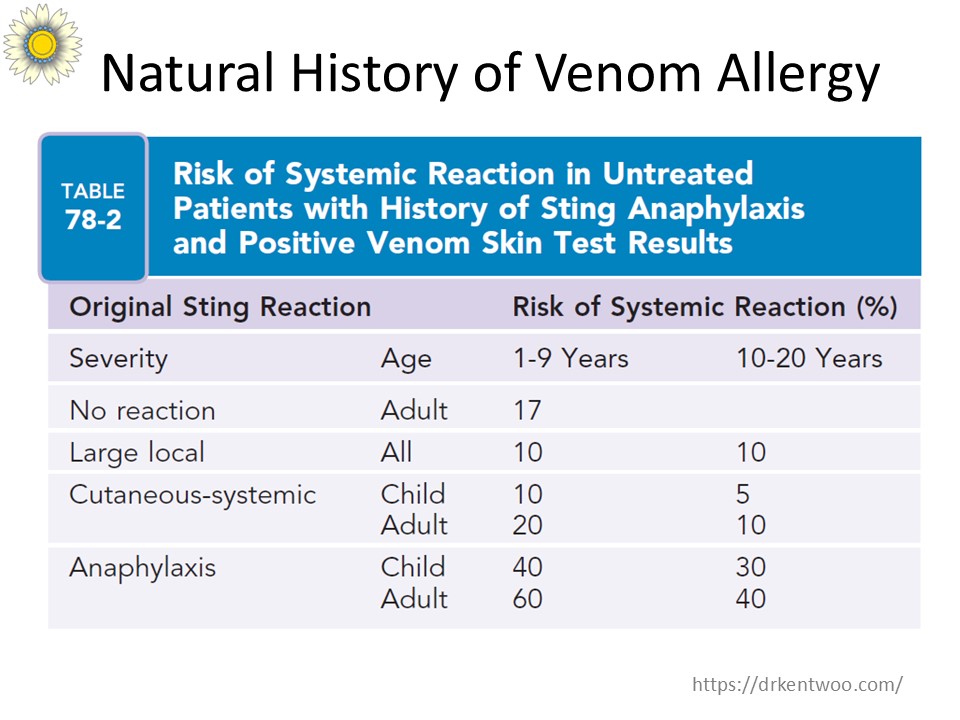
If you choose NOT to undergo immunotherapy, the risk of a future allergic reaction can vary based on several factors:
Risk of Future Reactions
- Around 45% of people with venom allergies will experience a systemic reaction to a future sting. Even if you didn’t react to a first sting, you still have a 20% chance of reacting to a subsequent one.
- Adults and those allergic to honeybee venom are at a higher risk of systemic reactions compared to children or those allergic to wasps. In fact, about 25% of patients experience reactions 7-10 years after their first sting.
Children vs. Adults
- Children who have mild skin-only (cutaneous) reactions face a 10-15% risk of developing systemic reactions as they grow, though most will remain mild. Only about 3% of these children will have severe reactions.
- Children who have experienced moderate to severe reactions have a 30% chance of severe reactions in adulthood.
Large Local Reactions
- Experiencing significant swelling at the sting site (a large local reaction) does not generally mean you’re at high risk for anaphylaxis. There’s only a 5-10% chance that local reactions will progress to systemic reactions.
Venom-Specific IgE
- Around 20% of healthy adults have venom-specific IgE antibodies, but not all will experience allergic reactions. In fact, 30-50% of people with positive venom tests may test negative later without treatment.
Risk of Progression
- The risk of mild reactions progressing to severe ones is generally low, especially in children. Adults are also unlikely to see a worsening of reactions with repeated stings.
When Do You Need an EpiPen?
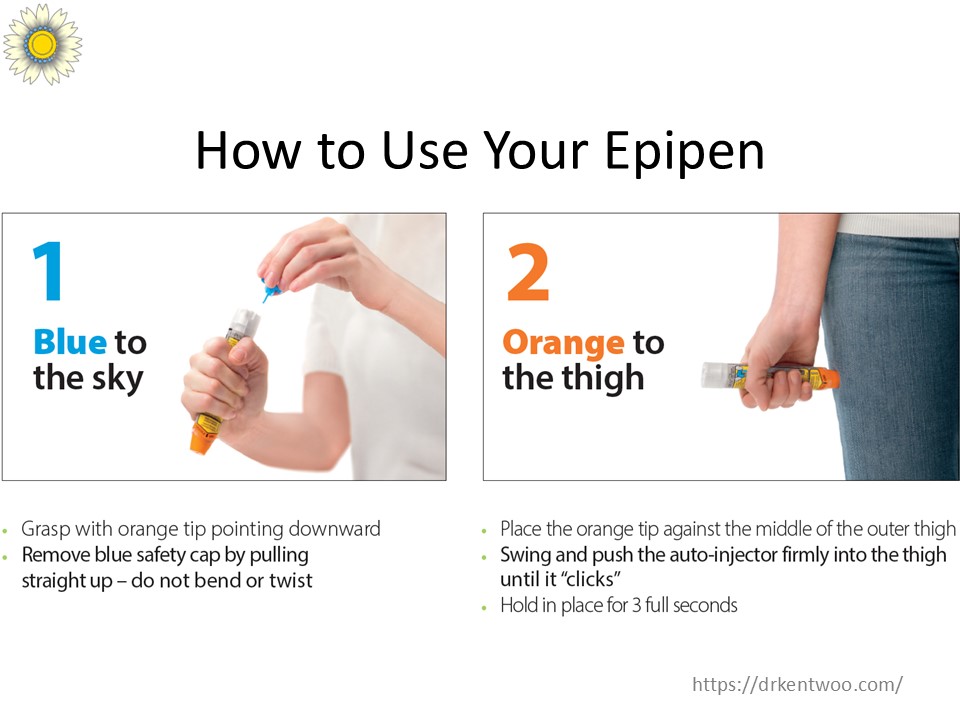
If you’ve had a severe reaction to a sting, it’s essential to consult an allergist. Together, you can assess your risk and decide whether carrying an EpiPen—a self-injectable emergency dose of epinephrine—is necessary.
Prevention Tips
While it’s impossible to completely avoid stings, you can lower your risk by taking these precautions:
- Stay calm and avoid swatting at insects, as sudden movements can provoke them.
- Wear protective clothing, especially when outdoors or in areas where insects are common.
- Be cautious around insect nesting sites, such as trash cans, flowerbeds, and outdoor eating areas.
Information You Can Use:
- Recognizing Allergy: Severe allergic reactions to stings can cause life-threatening symptoms like swelling, trouble breathing, or anaphylaxis.
- Risk of Future Reactions: If you’ve had a systemic reaction to a sting, you are at high risk for another severe reaction.
- Venom Immunotherapy (VIT): VIT offers 90-98% protection against future allergic reactions by desensitizing your immune system.
- Effectiveness by Insect: VIT is highly effective for wasps and fire ants (90-95%) and slightly less for honeybees (85%).
- Prevention: Carry an EpiPen if you’re at risk and avoid insect nests, wear protective clothing, and stay calm around insects.
Conclusion
Stinging insect allergies can be serious but are manageable with the right precautions and treatment. If you suspect you have an allergy to insect stings, consult an allergist for testing and explore treatment options like venom immunotherapy, which can provide long-term protection and peace of mind.

